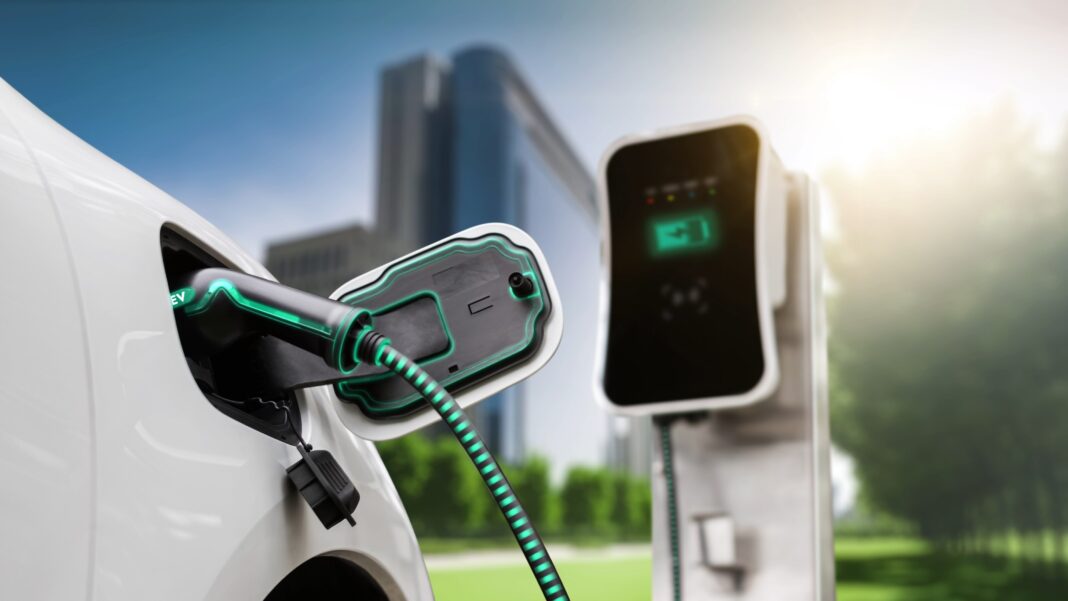The U.S. Now Has One EV Charging Station For Every 15 Gas Stations
Nearly 600 public fast-charging EV (electric vehicle) stations were installed in the United States in the first few months of 2024, a new report from Bloomberg reveals. So now, there’s nearly 8,200 fast-charging EV stations across the country, which equates to one for every 15 gas stations.
Fast-charging stations typically charge around 80% of the EV’s battery in under twenty minutes, which makes EVs a more attractive proposition for consumers. The cost of most of the recent installations was covered by the Biden administration’s National Electric Vehicle Infrastructure (NEVI) program, which will award almost $5 billion to build charging stations across the country.
Charging Deserts no Longer Major Problem
“EV demand has slowed, but it hasn’t stopped,” says Chris Ahn, who heads the Deloitte U.S. Connected Vehicle and Electrification practice. “[There] aren’t a ton of charging deserts left. A lot of location problems have been solved.” On the whole, rural counties and low-income communities are more likely to lack EV charging stations than metropolitan cities.
For example, states like Massachusetts or California where EVs are popular have between seven to 21 chargers per 10,000 residents, while other counties in the South and Midwest have as little as one or two chargers per 10,000 residents.
However, some retailers are attempting to put an end to charging deserts (areas with little to no available charging stations). 7-Eleven, for instance, has its own EV charging network called 7Charge, which is currently online in locations across Florida, California, Texas, and Colorado. 7Charge will also serve charging deserts in the near future.
Charging Stations on the UP in Middle America
Aside from 7-Eleven, Buc-ee’s has opened charging stations at ten convenience store locations, while Wawas opened nine, all in early 2024. As such, charging stations are now increasingly commonplace in middle America, whereas previously they tended to be more concentrated across the west and east coasts.
For instance, eleven new stations opened in Alabama, thirteen each in Tennessee and Missouri, and sixteen in Indiana. Even Kahului Park & Ride on Maui opened a station thanks to the NEVI program.
Demand for EVs Remains Strong
In the U.S., new EV registrations reached 1.4 million in 2023, which is a more than 40% increase from 2022. As EVs generate zero carbon emissions, they help drivers save on fuel costs. EV drivers typically spend around 60% less on fuel per year, compared to drivers of gas-powered cars, a recent Consumer Reports study reveals.
EVs are also easy to operate and drive, with a powerful performance that rivals regular gas-powered cars. For instance, the Kia EV6 has an impressive 430kW power output and accelerates from 0-100 in just 3.5 seconds. As such, it was crowned “World Performance Car of the Year” at the 2023 World Car Awards where it was in competition with the best in gas-powered cars.
EV Charging Stations Set to Make Profits
As EVs become increasingly popular across the country, the companies that own EV charging stations now have more of a financial incentive to increase the rate of installations. According to Bloomberg, “annual worldwide public-charging revenue will rise to $127 billion by 2030, with Tesla on track to account for $7.4 billion of that”. Previously, low utilization rates made it difficult for operators to really make a profit on the installations.
But now “we are getting closer to where a lot of these charging stations actually turn profitable,” says Philipp Kampshoff, Senior Partner and leader of the McKinsey Center for Future Mobility. “Now, you have a sort of line of sight and then obviously it makes sense to scale further.”
And this is only the beginning as states can expect more charging stations to open in the not-so-distant future thanks to funds from the NEVI program. Yet, “for all the growth in public plugs, EVs are still trying to overcome the stigma of a dearth of charging”, Samantha Houston, senior vehicles analyst at the Union of Concerned Scientists, tells Bloomberg. “There tends to be a lag in when the charging infrastructure is out there and visible and when public perception catches up to it,” she says. “In some areas of the country, it’s just not as easy to see.”
